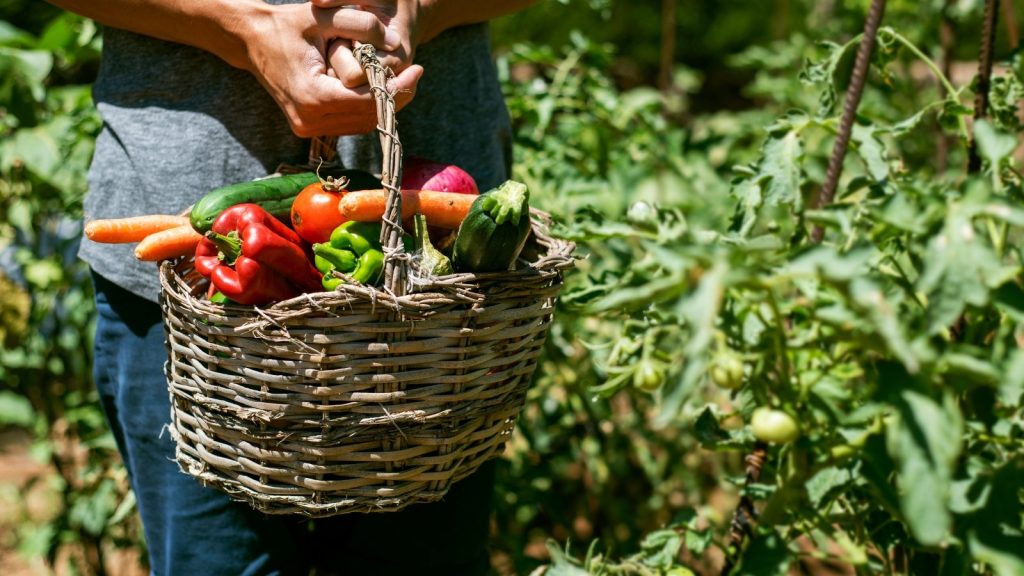Harvesting for Flavor: Techniques to Enhance the Taste of Your Homegrown Produce

Harvesting the Secrets of Flavorful Homegrown Produce
When you cultivate your own fruits and vegetables, the joy of harvesting is only matched by the anticipation of flavor. However, flavor enhancement starts long before the moment you pluck your tomatoes or carrots from the earth. Understanding the nuances of gardening can transform your backyard into a culinary treasure trove.
To truly savor the fruits of your labor, consider these key techniques that elevate taste:
- Timing of Harvest: Picking produce at the right moment can significantly affect flavor. For instance, ripe tomatoes bursting with sweetness should be harvested just before they become overripe. If left on the vine too long, they can lose their perfect balance of acidity and sweetness, resulting in a bland flavor. Similar care should be taken with peppers, which typically should be harvested when they have developed their full color and firmness for the best taste.
- Soil Quality: Nutrient-rich soil plays a crucial role in taste. Enriching your garden with compost not only enhances soil fertility but also promotes microbial activity that aids nutrient absorption. For example, incorporating well-aged manure or organic compost can lead to flavorful vegetables, such as carrots that taste significantly sweeter when grown in nutrient-dense soil. Regular soil testing can guide you in amending your soil for optimal growth conditions.
- Companion Planting: Pairing certain plants together can enhance flavors and also deter pests. For instance, basil grown alongside tomatoes can infuse them with aromatic qualities, creating a harmonious blend that enhances the overall dining experience. Additionally, interplanting marigolds can repel nematodes, which can damage roots, ensuring your tomato plants grow healthier and tastier.
Your homegrown bounty can be transformed into extraordinary culinary creations. Think freshly harvested basil and tomatoes in a Caprese salad or crunchy cucumbers in a cool summer salad, bursting with flavor and nutrition. By focusing on essential growing techniques, you’ll not only boost the flavor but also enjoy a more rewarding gardening experience.
In the following sections, we will delve deeper into these methods and more, including innovative watering techniques, pest management with natural controls, and seasonal planting strategies. With these insights, you’ll be equipped with the tools you need to ensure every bite of your harvest is packed with taste and health benefits.
DON’T MISS: Click here to learn why soil preparation is essential for your garden

Unlocking the Flavor Potential of Your Garden
Harvesting produce at its peak isn’t merely about timing; it involves a comprehensive understanding of agricultural practices that can significantly amplify taste. Enhancing flavor starts with choices made in the garden that cater to both the plants’ needs and your culinary aspirations. Here, we will explore some essential techniques that not only improve flavor but contribute to the overall health of your harvest.
Optimal Harvest Times
Each fruit or vegetable carries its own timeline to reach the zenith of flavor. Paying close attention to these timelines can set your produce apart from store-bought varieties. For example, zucchini is often best harvested when it is about 6 to 8 inches long; waiting too long will yield larger, less flavorful, and often tougher squash. Similarly, beans are best picked young—just as they begin to fill out, they provide a tender texture and rich flavor, ideal for any dish.
For leafy greens such as spinach, the best flavor comes when the leaves are young and vibrant. Harvesting in the morning, after the dew has dried, can also ensure they retain their crispness and nutrients. Avoiding the heat of midday can greatly enhance not just flavor, but also the longevity of your greens post-harvest.
Soil Amendments and Nutrients
The foundation of flavor lies in the quality of the soil. Nutrient-rich soil enables plants to absorb a variety of minerals that directly influence taste. Regular amendments like compost or organic fertilizers release nutrients slowly over time, fostering steady growth and development. Certain plants, such as beets and carrots, benefit from amendments like bone meal or kelp, which promote robust flavor profiles.
- Compost: Enhances soil fertility and improves texture, leading to better water retention and nutrient availability.
- Organic Fertilizers: Provide a natural source of nutrients that promote strong root systems and vigorous plant growth.
- Mulching: Helps maintain soil moisture and temperature, indirectly contributing to better taste by reducing stress on the plants.
Watering Techniques for Flavor Improvement
The way you water your plants can also impact their flavor. Consistent watering is crucial, but how and when you do it matters significantly. Consider employing a technique known as deep watering, which means watering less frequently but ensuring that moisture penetrates deep into the soil. This encourages roots to grow downwards, resulting in more flavorful produce.
Understanding your local environment plays a vital role here, too. During hot summer days, watering in the early morning helps avoid evaporation loss and ensures that your plants receive adequate moisture before the sun heats the ground.
By combining these techniques with the earlier mentioned practices, you set the stage for not only bountiful harvests but also extraordinary flavors that can elevate your kitchen endeavors. As we continue to explore the intricacies of gardening, you’ll discover how various elements interconnect, ultimately transforming your growing techniques into an orchestra of flavors on your plate.
| Technique | Benefits |
|---|---|
| Soil Enrichment | Improves flavor through nutrient-dense soil, leading to healthier plants and more vibrant produce. |
| Harvest Timing | Collecting crops at their peak ripeness significantly enhances taste profile and aroma, providing optimal enjoyment in meals. |
| Watering Techniques | Consistent irrigation supports flavor development by allowing plants to absorb necessary nutrients effectively. |
| Companion Planting | Enhances taste by pairing compatible plants that can support one another’s growth, leading to richer flavors. |
The art of harvesting for flavor extends beyond just picking at the right time. Techniques such as soil enrichment—adding organic matter like compost—can greatly influence the nutritional content of fruits and vegetables, contributing to a more robust taste. Moreover, understanding the ideal time to harvest, when fruits are fully mature but not overripened, can elevate the culinary experience by maximizing both texture and flavor intensity.Another vital component is implementing effective watering techniques. Under- or over-watering can impact flavor negatively; thus, establishing a consistent watering regime supports not only plant health but also the depth of flavor in produce. Finally, exploring the method of companion planting can lead to synergistic benefits; certain plants can boost each other’s growth and flavor, turning your garden into a thriving ecosystem yielding extraordinary tastes. Each of these techniques contributes to a productive garden that offers far more than just quantity, but extraordinary quality in taste.
DISCOVER: Click here to learn about natural soil enrichment methods
Advanced Techniques for Flavor Enhancement
Once you have the basics of optimal harvesting, nutrient management, and watering down, it’s time to delve into some advanced techniques that can take your homegrown produce to the next level in flavor. From strategic plant placement to employing natural pest control, these methods will enhance both quality and taste, offering an exhilarating culinary experience.
Companion Planting
Companion planting is a time-honored technique that goes beyond mere aesthetics in the garden. Pairing compatible plants can encourage better growth, deter pests, and even enhance flavor. For instance, planting basil with tomatoes is well-known to improve both plants’ flavor profiles; basil’s aromatic oils can enhance the taste of tomatoes when planted nearby. Additionally, certain flowers like marigolds can attract beneficial insects, helping maintain a balanced ecosystem that allows your vegetables to thrive.
- Strong Aromatic Herbs: Plant herbs adjacent to vegetables to enrich their flavor and repel unwanted pests.
- Enhancing Growth: Use combinations, like corn, beans, and squash, which support each other’s growth through mutual benefits.
- Pollinator Attraction: Include flowering plants not only for beauty but to attract pollinators that can lead to better yields.
Pruning and Trellising Techniques
Consideration must also be given to the physical management of your plants. Pruning can significantly enhance flavor by directing the plant’s energy toward fruit production. For example, pruning grapevines results in fewer but significantly sweeter grapes. Similarly, trellising not only saves space in smaller gardens but gives fruits like cucumbers and tomatoes better access to sunlight and air circulation, both of which contribute to exceptional flavor development.
When trellising, be sure to orient your plants towards the sun as much as possible, maximizing their exposure to natural light. This technique is critical, as fruits developed in full sunlight tend to boast a more complex flavor profile compared to those in shaded conditions.
Timing Your Planting
Beyond when to harvest, understanding when to plant can also elevate flavor. Planting crops like sweet corn and pumpkins a few weeks earlier in the spring can lead to a July harvest that benefits from warm summer days and nights. This creates an environment that sweetens cob corn and pumpkins, filling them with sugars that enhance their intrinsic flavors. Conversely, understanding your area’s first frost date can help you plant fall crops such as kale, which actually become sweeter after a light frost due to the breakdown of starches into sugars.
Curing Techniques Post-Harvest
Finally, employing curing techniques for certain produce can enhance their flavor even after picking. Onions and garlic, for instance, benefit from a curing process that allows their flavors to mature and develop complexity. After harvesting, simply braid garlic and hang it in a cool, dark place with good air circulation. Onions can be laid out in a single layer in a warm, dry area before storing them. This small step can lead to a remarkable increase in the intensity of their flavors, enriching your culinary dishes.
By embracing these advanced methods and continuing to experiment within the unique environment of your garden, you can unlock a remarkable depth of flavors in your homegrown produce, setting the stage for extraordinary dishes that celebrate the true essence of your gardening efforts.
DISCOVER MORE: Click here to learn about effective soil preparation techniques
Conclusion: Elevating Homegrown Produce Through Flavor Techniques
In conclusion, the journey of transforming your garden’s bounty into flavors that tantalize the taste buds hinges on a blend of foundational practices and advanced techniques. By mastering the art of optimal harvesting, strategically employing methods like companion planting, and perfecting the timing of your planting and curing processes, you can amplify the natural flavors of your homegrown produce.
Moreover, the physical management of your plants through pruning and trellising not only optimizes growth but also influences flavor intensity. As you cultivate a diverse ecosystem in your garden, don’t forget the value of attracting beneficial insects and pollinators, which contribute significantly to your crops’ quality and taste.
As you experiment with these flavor-enhancing techniques, remember that each garden is unique. The environmental conditions, plant varieties, and personal culinary preferences can all play a role in the outcome of your produce. By staying curious and open to learning, you can cultivate a garden that consistently yields fruits and vegetables bursting with flavor.
Whether you are creating comforting meals for your family or dazzling guests with gourmet dishes, the skills you develop in harvesting for flavor will yield unmatched satisfaction. Embrace the process, share your discoveries, and immerse yourself in the vibrant world of homegrown produce where the real secret lies in the taste of the harvest.



